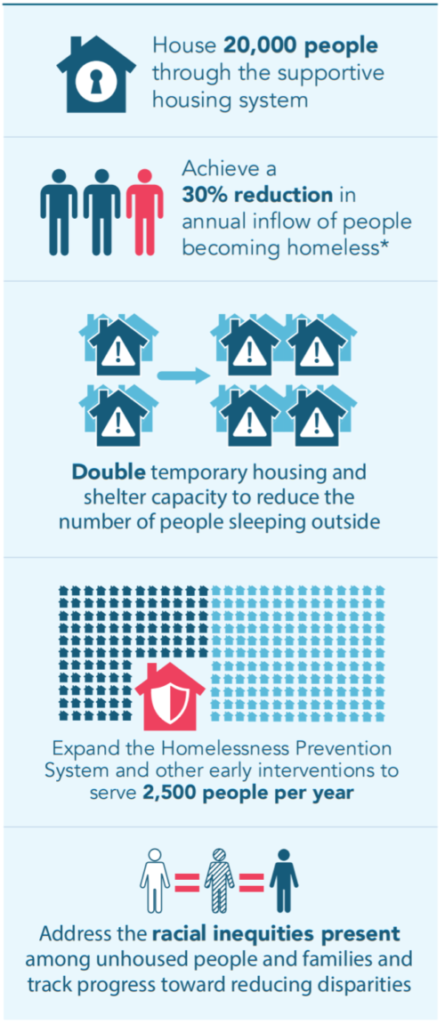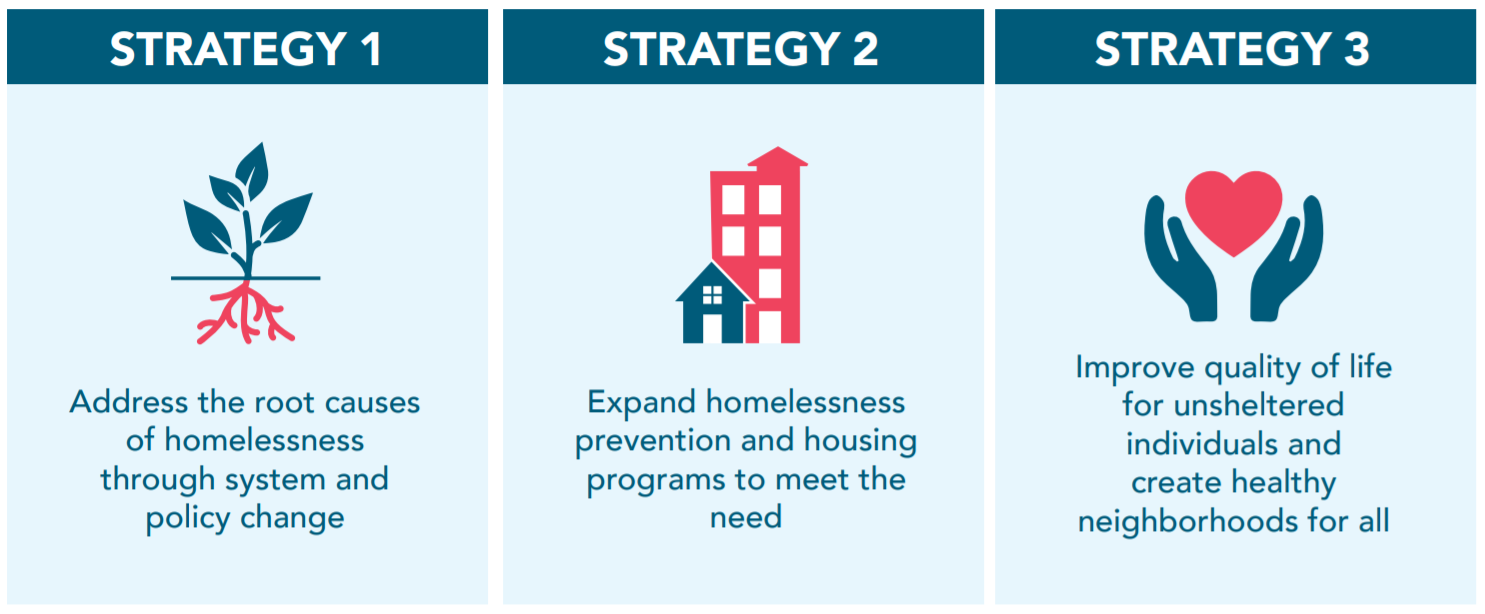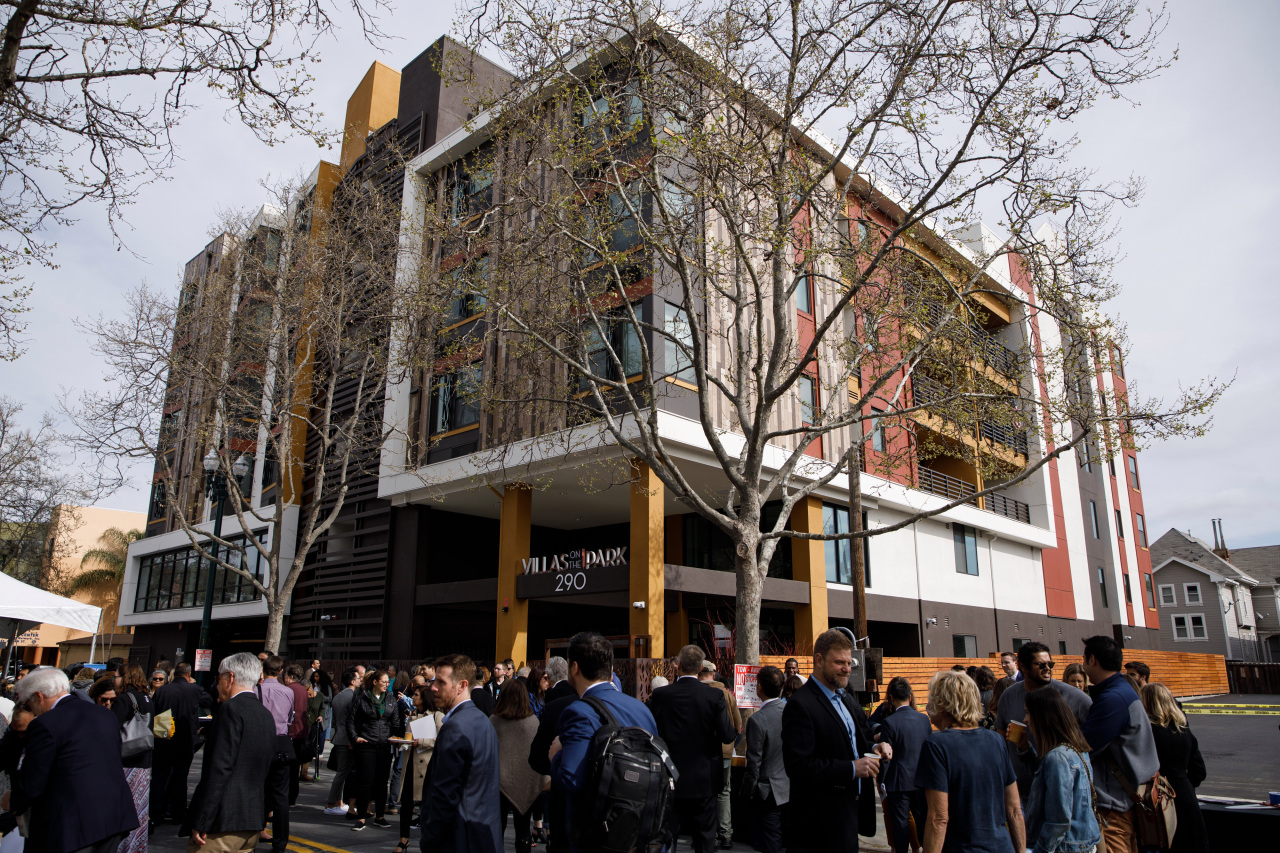Despite progress in Santa Clara County to create a supportive housing system that helps thousands of homeless individuals and families each year, the homelessness crisis continues to grow. The systemic factors driving homelessness in our community, including the lack of housing options affordable for low-income residents, are stronger than ever and push more of our neighbors onto the streets every day. These challenges have been compounded by the COVID-19 pandemic. The 2020-2025 Santa Clara County Community Plan to End Homelessness is the County’s newest roadmap for addressing our homelessness crisis. When local jurisdictions join the Plan, they become part of a group of community partners that form a continuum of care to address the needs of unsheltered residents. SV@Home is proud to endorse The 2020-2025 Santa Clara County Community Plan to End Homelessness.

Goals of the Community Plan to End Homelessness
As of the January 2019 Santa Clara County Homeless Census and Survey, there were 9,706 individuals experiencing homelessness on any given night in Santa Clara County. Families with children, seniors, individuals with disabilities, veterans, youth, and young adults are all represented in the county’s diverse homeless population. More than 80% of these individuals are unsheltered—sleeping outside, in cars, or other places not meant for human habitation. These numbers are likely to increase over the coming months as the full impact of the COVID-19 pandemic is felt.
Destination: Home is a public-private partnership established in 2008 to serve as the central organization for collective impact strategies to end homelessness in Santa Clara County. In 2014, Destination: Home developed a county-wide community plan to end homelessness by convening over 200 stakeholders in a year-long process. The 2020-2025 Community Plan to End Homelessness is the second generation of this roadmap, and was created with input from community members including people with lived experience of homelessness, service providers, and advocates. The Plan acknowledges the challenges ahead as our homelessness crisis is compounded by COVID-19’s economic impacts on families. This public health crisis has deeply impacted our local economy, leaving many more households on the brink of homelessness due to loss of income, lack of childcare, and economic uncertainty. As a result, there will be many more people experiencing or at risk of homelessness who will need immediate support, requiring flexible and innovative responses to homelessness.
The Community Plan to End Homelessness uses a Housing First model, a nationally recognized, evidence-based approach to homelessness. According to the National Alliance to End Homelessness, the Housing First approach ends homelessness by providing people experiencing homelessness with housing as quickly as possible, and then providing supportive services to meet individual needs and promote housing stability.
The Plan depends on three key strategies:

The Community Plan to End Homelessness calls for expanded coordination between systems, increased use of data to improve programs, and increased training opportunities for all partners. Integrating city, county, and nonprofit programs into a single, coordinated continuum of care will increase the effectiveness of all partners to better address the needs of unsheltered residents.
Check out the San Jose Housing Department’s podcast, Dwellings, in conversation with with Jennifer Loving, CEO of Destination: Home, and Lee Clark, Lived Experience Advisory Board Member for Destination: Home about the Community Plan to End Homelessness.
Additional Resources
2020-2025 Santa Clara County Community Plan to End Homelessness Executive Summary
2020-2025 Santa Clara County Community Plan to End Homelessness

